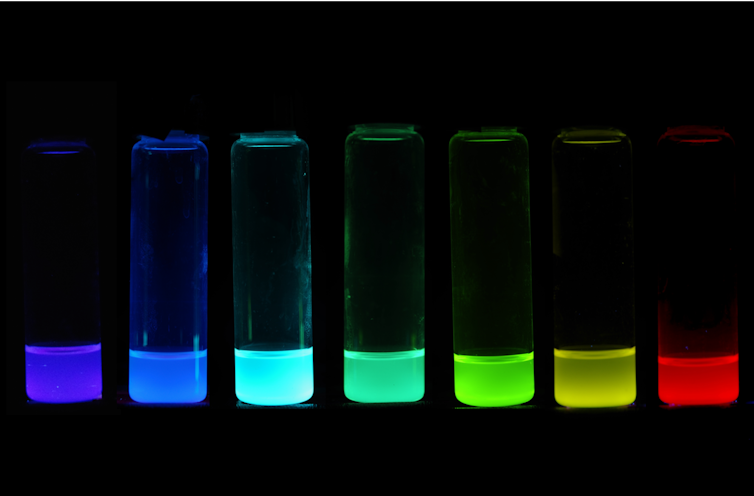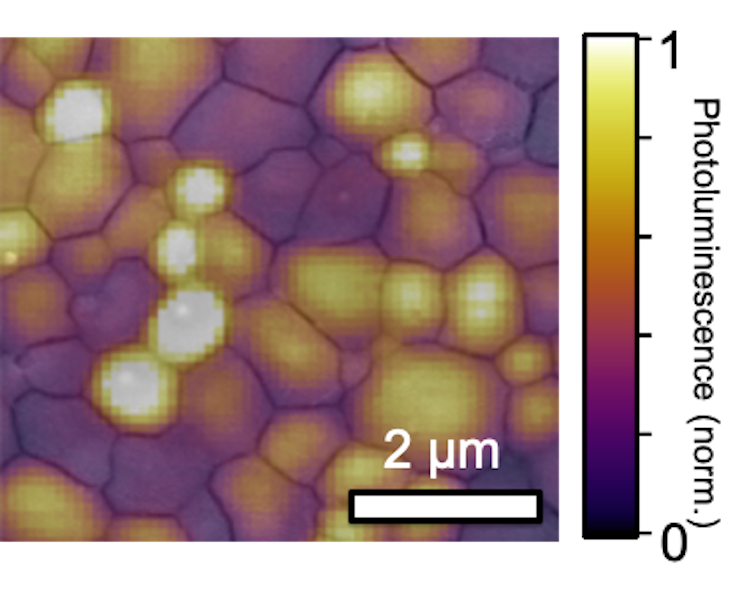These new semiconductors could revolutionize the solar energy industry
The demand for cheaper, greener electrical energy implies that the vitality panorama is altering quicker than at some other level in historical past. That is significantly true of solar-powered electricity and battery storage. The price of each has dropped at unprecedented charges over the previous decade and energy-efficient applied sciences reminiscent of LED lighting have additionally expanded.
Entry to low-cost and ubiquitous solar energy and storage will rework the way in which we produce and use energy, permitting electrification of the transport sector. There’s potential for brand new chemical-based economies through which we store renewable energy as fuels, and help new gadgets making up an “internet of things.”
However our present vitality applied sciences gained’t lead us to this future: we’ll quickly hit effectivity and value limits. The potential for future reductions in the price of electrical energy from silicon photo voltaic, for instance, is proscribed. The manufacture of every panel calls for a good quantity of vitality and factories are expensive to build. And though the price of manufacturing might be squeezed just a little additional, the prices of a photo voltaic set up are actually dominated by the extras – set up, wiring, electronics, and so forth.
Which means that present solar energy programs are unlikely to satisfy the required fraction of our 30 TeraWatt (TW) international energy necessities (they produce lower than 1 TW right this moment) fast enough to deal with points reminiscent of local weather change.
Likewise, our present LED lighting and show applied sciences are too costly and never of excellent sufficient colour high quality to realistically change conventional lighting in a brief sufficient time-frame. This can be a drawback, as lighting presently accounts for 5% of the world’s carbon emissions. New applied sciences are wanted to fill this hole, and rapidly.
Halide perovskites
Our lab Cambridge England, is working with a promising new household of supplies often called halide perovskites. They’re semiconductors, conducting prices when stimulated with mild. Perovskite inks are deposited onto glass or plastic to make extraordinarily skinny movies – round one-hundredth of the width of a human hair – made up of steel, halide, and natural ions. When sandwiched between electrode contacts, these movies make solar cells or LED devices.
Amazingly, the colour of sunshine they take in or emit might be modified just by tweaking their chemical construction. By altering the way in which we develop them, we will tailor them to be extra appropriate for absorbing mild (for a photo voltaic panel) or emitting mild (for an LED). This permits us to make completely different colour photo voltaic cells and LEDs emitting mild from the ultra-violet, proper via to the seen and near-infrared.
Regardless of their low-cost and versatile processing, these supplies have been proven to be remarkably environment friendly as each photo voltaic cells and light-weight emitters. Perovskite photo voltaic cells hit 25.2% efficiency in 2019, sizzling on the heels of crystalline silicon cells at 26.7%, and perovskite LEDs are already approaching off-the-shelf natural light-emitting diode (OLED) performances.
These applied sciences are rapidly being commercialized, significantly on the photo voltaic cell entrance. UK-based Oxford Photovoltaics has built a production line and is filling its first buy orders in early 2021. Polish firm Saule Applied sciences launched prototype merchandise on the finish of 2018, together with a perovskite solar façade pilot. Chinese language producer Microquanta Semiconductor expects to provide greater than 200,000 square meters of panels in its manufacturing line earlier than year-end. The US-based Swift Photo voltaic (an organization I co-founded) is pioneering high-performance cells with light-weight, versatile properties.

Photo voltaic home windows and versatile panels
Not like typical silicon cells, which have to be very uniform for top effectivity, perovskite movies are comprised of mosaic “grains” of extremely variable dimension (from nanometers to millimeters) and chemistry – and but they carry out practically in addition to the most effective silicon cells right this moment. What’s extra, small blemishes or defects in perovskite movies don’t result in important energy losses. Such defects can be catastrophic for a silicon panel or a industrial LED.
Though we’re nonetheless making an attempt to know this, these supplies are forcing the group to rewrite the textbook for what we contemplate as a great semiconductor: they’ll have excellent optical and digital properties regardless of – or perhaps even because of – disorder.

We may hypothetically use these supplies to make “designer” coloured photo voltaic cells that mix into buildings or homes, or photo voltaic home windows that appear like tinted glass but generate power.
However the actual alternative is to develop extremely environment friendly cells past the effectivity of silicon cells. For instance, we will layer two completely different coloured perovskite movies collectively in a “tandem” solar cell. Every layer would harvest completely different areas of the photo voltaic spectrum, growing the general effectivity of the cell.
One other instance is what Oxford PV are pioneering: including a perovskite layer on high of an ordinary silicon cell, boosting the effectivity of the prevailing expertise without significant additional cost. These tandem layering approaches may rapidly create a boost in the efficiency of photo voltaic panels past 30%, which would scale back each the panel and system prices whereas additionally lowering their energy footprint.
These perovskite layers are additionally being developed to fabricate versatile photo voltaic panels that may be processed to roll like newsprint, additional reducing costs. Light-weight, high-power photo voltaic additionally opens up potentialities for powering electrical autos and communication satellites.
For LEDs, perovskites can obtain incredible color quality which may result in superior flexible display technologies. Perovskites may additionally give cheaper, increased high quality white lighting than right this moment’s industrial LEDs, with the “colour temperature” of a globe capable of be manufactured to present cool or heat white mild or any desired shade in between. They’re additionally producing pleasure as constructing blocks for future quantum computers, in addition to X-Ray detectors for terribly low dose medical and safety imaging.
Though the primary merchandise are already rising, there are nonetheless challenges. One key situation is demonstrating long-term stability. However the analysis is promising, and as soon as these are resolved, halide perovskites may really propel the transformation of our vitality manufacturing and consumption.The Conversation
This text is republished from The Conversation by Sam Stranks, Lecturer in Power and Royal Society College Analysis Fellow, University of Cambridge beneath a Inventive Commons license. Learn the original article.














